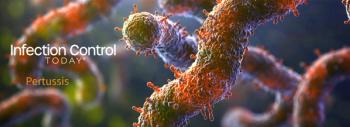
Septic Tanks Aren't Keeping Human Sewage Out of Rivers and Lakes
In the largest watershed study of its kind, MSU researchers samples 64 rivers in Michigan for human fecal bacteria. Illustration courtesy of MSU
The notion that septic tanks prevent fecal bacteria from seeping into rivers and lakes simply doesn't hold water, says a new Michigan State University study. Water expert Joan Rose and her team of water detectives have discovered freshwater contamination stemming from septic systems. Appearing in the Proceedings of the National Academy of Sciences, the study is the largest watershed study of its kind to date, and provides a basis for evaluating water quality and health implications and the impact of septic systems on watersheds.
"All along, we have presumed that on-site wastewater disposal systems, such as septic tanks, were working," says Rose, the Homer Nowlin Chair in water research. "But in this study, sample after sample, bacterial concentrations were highest where there were higher numbers of septic systems in the watershed area."
Until now, it was assumed that the soil could filter human sewage, and that it works as a natural treatment system. Discharge-to-soil methods, a simple hole dug in the ground under an outhouse, for example, have been used for many years. Unfortunately, these systems do not keep E. coli and other pathogens from water supplies, Rose says.
"For years we have been seeing the effects of fecal pollution, but we haven't known where it is coming from," she adds. "Pollution sources scattered in an area - called non-point - have historically been a significant challenge in managing water quality."
The researchers used source-tracking markers, a novel method Rose calls "CSI (Crime Scene Investigation) for water," to sample 64 river systems in Michigan for E. coli and the human fecal bacteria B-theta. Advances in source-tracking allow water scientists to track down the origin of non-point pollution more accurately than ever before.
Michigan, Florida and South Carolina, as well as resort areas near lakes all across the United States, rely heavily on septic tanks for human sewage. Though each state regulates septic tanks differently, more needs to be done in order to ensure humans are not contaminating surface waters by using septic tanks.
Continuing to use long-trusted methods of waste disposal systems may come at a hefty price, adds Rose. The Environmental Protection Agency's latest survey for capitol improvement identifies the need to invest $298 billion over the next 20 years on wastewater and stormwater infrastructure to meet the Clean Water Act public safety goals of swimmable and fishable waters.
"This study has important implications on the understanding of relationships between land use, water quality and human health as we go forward," she says. "Better methods will improve management decisions for locating, constructing and maintaining on-site wastewater treatment systems. It's financially imperative that we get it right."
This research was supported by grants from National Oceanic and Atmospheric Administration (Tipping Points Great Lakes Environmental Research Lab) and EPA (112013 and 118539). Contributing scientists were Marc Verhougstraete, College of Public Health, University of Arizona; Sherry Martin, Anthony Kendall and David Hyndman, Department of Geological Sciences, MSU.
Source: Michigan State University
Newsletter
Stay prepared and protected with Infection Control Today's newsletter, delivering essential updates, best practices, and expert insights for infection preventionists.






